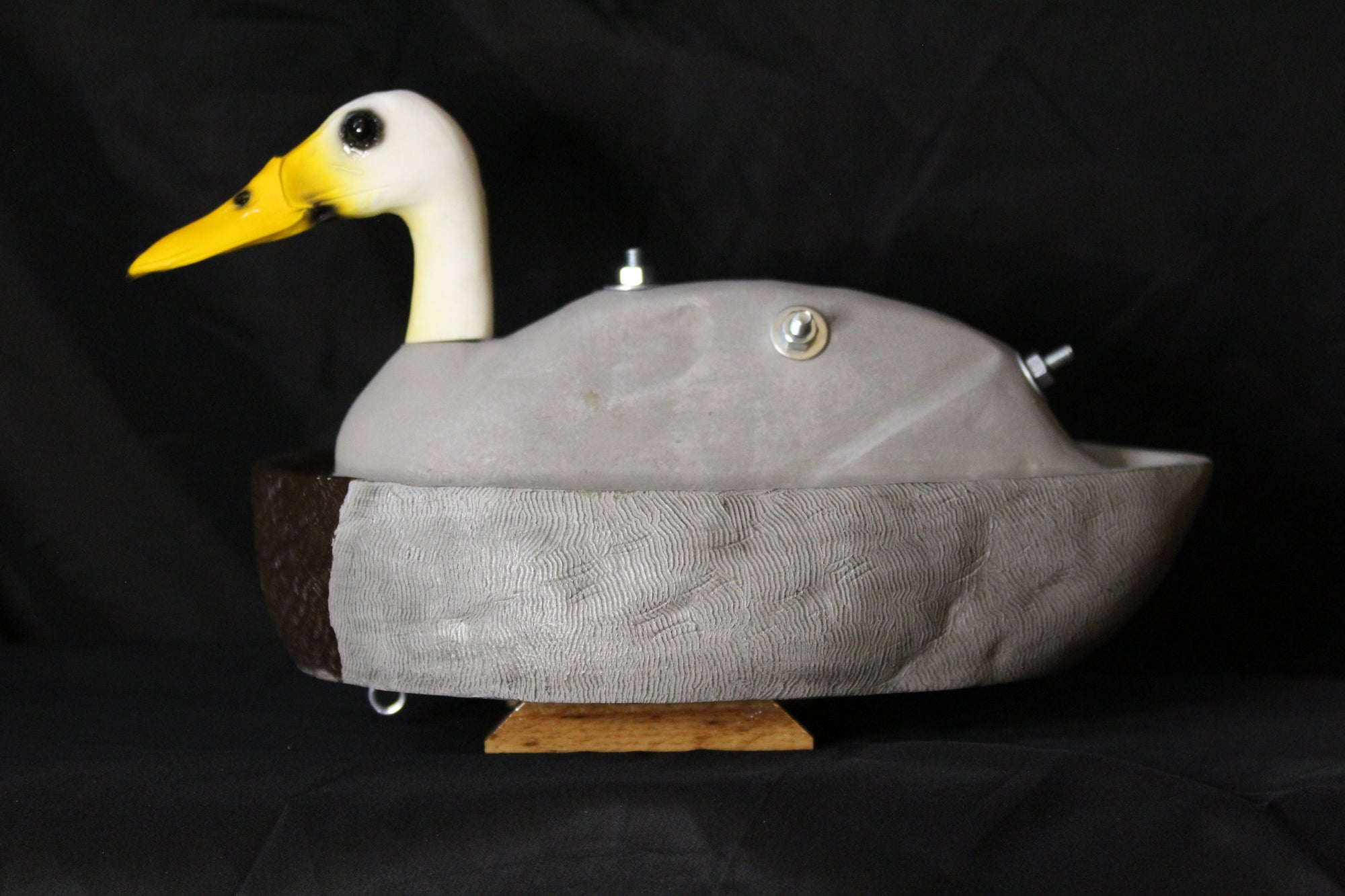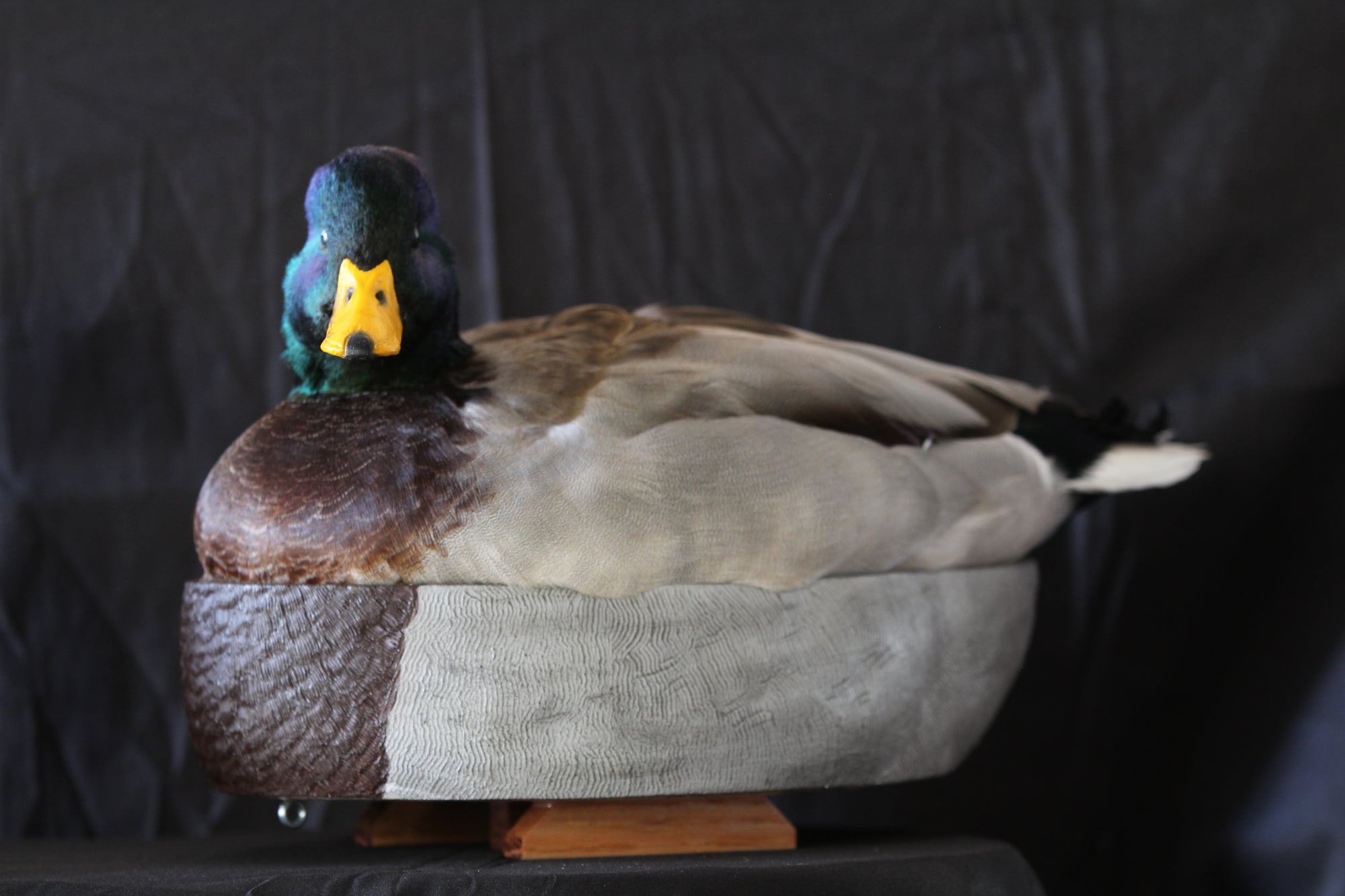About the decoys
To produce our decoys, the heads are made from a polyurethane plastic and the bodies are created using poplar wood for the base board and polyurethane foam. The decoys are then hand painted. To complete every decoy we add oak keels and apply a kleer coat epoxy to the bottom.
The decoys arrive with the head and body separate, shrink wrapped for shipping purposes. We send a hot glue gun, glue, borax and an exacto knife with each order. Instructions are also included to help walk you through the completion process.
Plastic decoys can be very effective, but as birds become tougher to hunt late in the season they can tell the difference between a plastic decoy and real feathers. The UDS system allow you to add realism to your spread when nothing else seems to work.
Yes, our customers are very satisfied with their results when using Boland Ultimate Decoy System decoys. If managed properly, a skin should last on the decoy for multiple seasons. If a skin receives more wear and tear than you’d like to see, it can be removed and replaced as often as you would like.
Please see our "Returns" section for more info.
completion of decoys
No, according to the Migratory Bird Treaty of 1918, the sale of any part of a migratory bird is considered a felony. Because of this, the UDS system can not be sold with any feathers.
Decoys are designed to be completed on your own. We provide instructional content to help walk you through the process. A taxidermist can be utilized to complete your decoys, but is not necessary.
No, but you can purchase and attach rigs separately.
If managed properly, a skin should last on the decoy for multiple seasons. If a skin receives more wear and tear than you’d like to see, it can be removed and replaced as often as you would like.
Just add feathers




